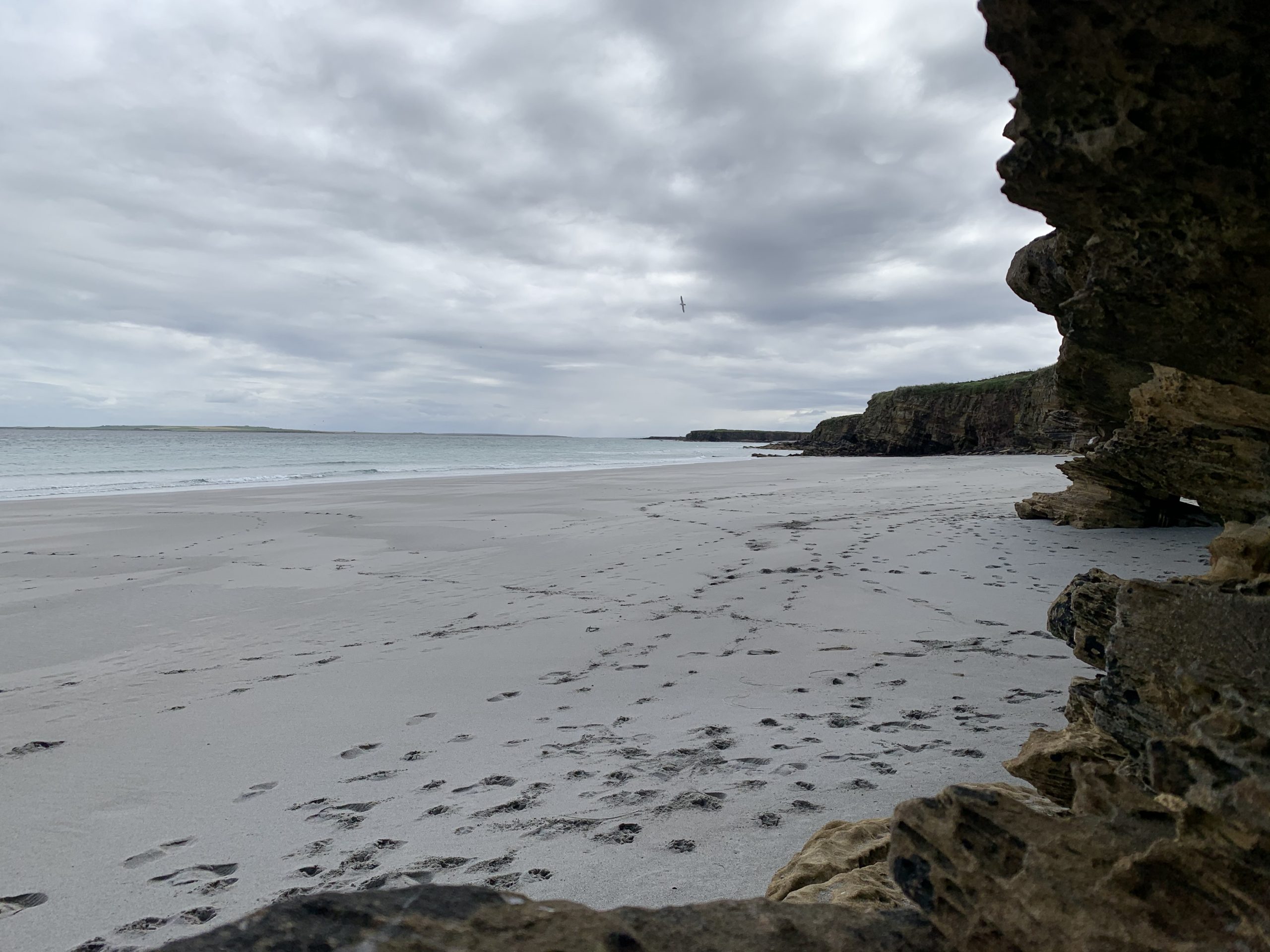Doun Helzie (pronounced Doon Helly) is a little jewel of a beach even by Sanday’s very high standards. If possible, choose to visit a couple of hours before low tide, in the morning, on a sunny day!
If you arrive on the ferry, you’re not too far from the start of the walk. Drive along the B9070 from the ferry; after 3.25 km there’s a right-hand bend. After another half kilometre turn right on a narrower road. After just over a kilometre, you’ll find an electricity sub-station on the left-hand side. Park here, (HY 612 357) then walk back up the way you came for 250 metres. Here’s the start of the walk; you’ll see a clear notice warning you about the tide, and showing you the route, which is the same there and back.
Go up the track for 400 metres until you’re confronted by a metal farm-gate.
Even if it is open, turn right here and follow the marked and fenced corridor route, which soon has a sharp left-hand turn taking you towards the cliff top. Once there, turn left, following the waymarks, and follow the cliff top for 100 metres or so until you see the arrow directing you down the steepish (but not dangerous) track down to the beach.
You’re now on the Doun Helzie beach, and should start exploring by heading south, to your right. After the rock arch, you’ll find more, smaller arches, and a couple of little caves. So long as you have chosen low tide, you’ll be able to easily get to the next couple of beaches, and be able to explore some even bigger caves, and to have a look at the geology of the area. According to the geologists, this bit of Sanday is really a re-emergence of the Devonian sandstones of Eday; sedimentary rocks that were laid down in Lake Orcadie 400 million years ago when Orkney was located 10 degrees south of the equator. Some of us find it all very difficult to comprehend, but we are certainly struck by the amazingly intricate honeycomb structures left behind by differential erosion, and by the colours in the various rock strata.
Otters certainly use the area, and you may find tracks high up on the sand. You may also find spraints. If you’re not sure, sniff them; the smell is not unpleasant; in fact it’s slightly sweet and may or may not remind you of a church porch. Better still, you may even see an otter.
What else to see?
Depending on recent winds and tides, it’s worth looking at the strandline for shells. There are usually plenty of tellins, but look out for the Faroese sunset shell. Finally, a rather unsightly pile of material high on the beach close to the cliff-path marks the site of the old electricity cable. In 2007, Sanday’s cable from Stronsay was found to be faulty through age and a new one has been laid coming ashore in the Bay of Stove, so the Doun Helzie line, and all the poles are now redundant.
Facilities:
None

